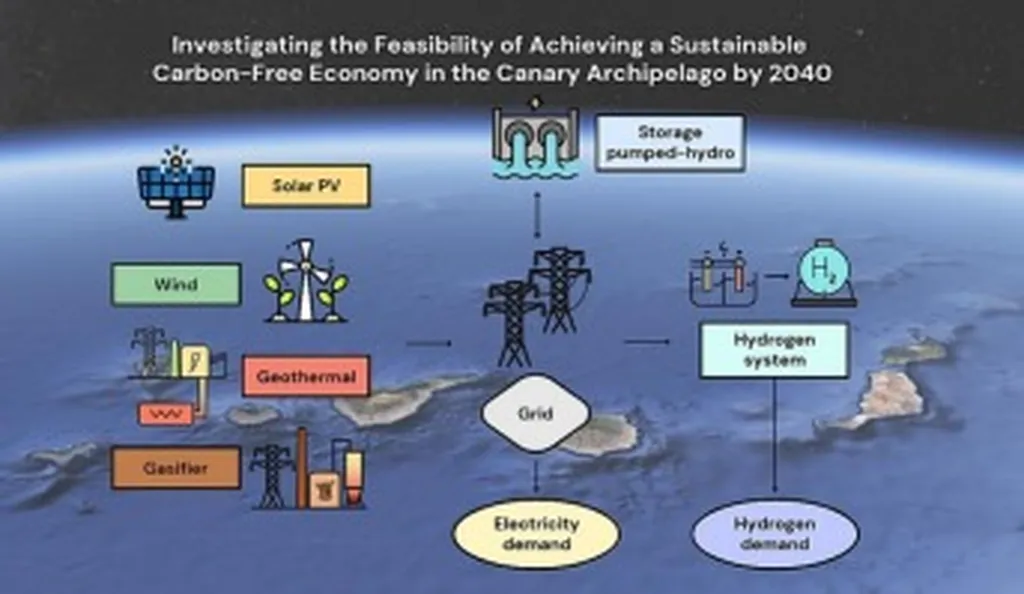In the heart of the Canary Islands, a groundbreaking study is unraveling the intricate dance between biodiversity and carbon assimilation, offering crucial insights for the energy sector in the face of climate change. Alicia V. Perera-Castro, a researcher from the Department of Botany, Ecology and Plant Physiology at the Universidad de La Laguna, has led a team that developed an empirical model to predict how 48 native species across various ecosystems respond to environmental changes. Their findings, published in the journal ‘Global Ecology and Conservation’, could significantly influence how we approach carbon capture and conservation strategies.
The study focuses on the unique altitudinal gradient of Tenerife, which spans from arid coastal communities to high mountain forests. This gradient provides an exceptional natural laboratory to evaluate how environmental factors like radiation, temperature, humidity, and soil water deficits affect the carbon assimilation of endemic species. “Understanding these responses is crucial for predicting the future carbon capture potential of these ecosystems,” Perera-Castro explains.
The model developed by Perera-Castro and her team has demonstrated broad applicability across different plant communities. It reveals that both air and soil moisture significantly influence photosynthesis capacity, with soil moisture emerging as the most critical driver of carbon uptake. “Plant water status is a key factor that needs to be incorporated into future carbon assimilation models,” Perera-Castro emphasizes.
The study also highlights that temperature primarily affects dark respiration, which could lead to increased CO2 loss as temperatures rise. This finding is particularly relevant for the energy sector, as it underscores the importance of considering respiration rates in carbon capture and storage projects.
The implications of this research are far-reaching. By understanding how different species respond to environmental changes, we can better predict the resilience of ecosystems and their capacity to sequester carbon. This knowledge is invaluable for developing effective conservation strategies and carbon offset programs, which are increasingly important in the energy sector’s efforts to mitigate climate change.
Perera-Castro’s work also sheds light on the sensitivity of different species to environmental factors, providing a ranking that could guide conservation efforts. “This ranking can help prioritize species for conservation based on their sensitivity to environmental changes,” Perera-Castro notes.
As the world grapples with the challenges of climate change, studies like this one offer a beacon of hope. By unraveling the complexities of carbon assimilation in high-biodiversity ecosystems, we can better understand and protect the natural systems that are crucial for our planet’s health. The energy sector, in particular, stands to gain valuable insights from this research, which could shape the development of more effective and sustainable carbon capture strategies.
In the words of Perera-Castro, “This research is a step towards a more comprehensive understanding of how our natural ecosystems will respond to climate change, and how we can best protect and utilize them in the face of these challenges.” As we move forward, the insights gained from this study will undoubtedly play a pivotal role in shaping the future of carbon capture and conservation efforts.

